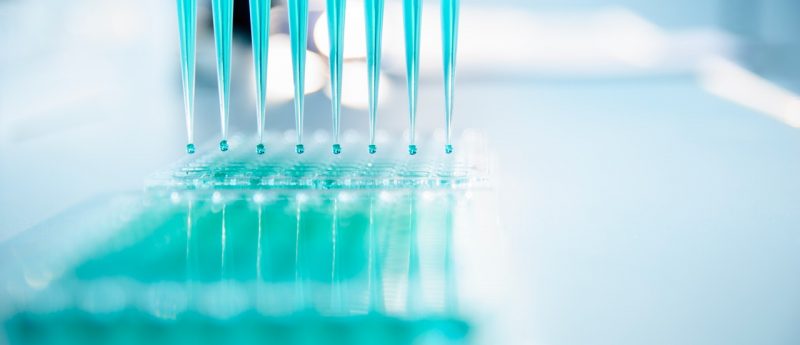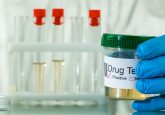Microsampling in sports drug testing – an interview with Laura Mercolini (University of Bologna)

 Laura Mercolini is Assistant Professor in Medicinal Chemistry at the University of Bologna since 2012 and Head of the Laboratory of Pharmaco-Toxicological Analysis at the Department of Pharmacy and Biotechnology. Her research activity deals with the development of innovative strategies for the analysis of psychotropic compounds in biological and non-biological samples. She has published more than 50 peer-reviewed papers and given about 150 communications to national and international events, meetings and schools. Dr. Mercolini graduated with a Master’s Degree in Chemistry and Pharmaceutical Technologies and a Ph.D. in Pharmaceutical Sciences at the University of Bologna.
Laura Mercolini is Assistant Professor in Medicinal Chemistry at the University of Bologna since 2012 and Head of the Laboratory of Pharmaco-Toxicological Analysis at the Department of Pharmacy and Biotechnology. Her research activity deals with the development of innovative strategies for the analysis of psychotropic compounds in biological and non-biological samples. She has published more than 50 peer-reviewed papers and given about 150 communications to national and international events, meetings and schools. Dr. Mercolini graduated with a Master’s Degree in Chemistry and Pharmaceutical Technologies and a Ph.D. in Pharmaceutical Sciences at the University of Bologna.
Could you please provide a brief summary of your career to date?
I am Assistant Professor in Medicinal Chemistry at the Department of Pharmacy and Biotechnology of the School of Pharmacy, Biotechnology and Sport Science at Alma Mater Studiorum – University of Bologna (Italy). Since 2013 I have been Head of the Laboratory of Pharmaco-Toxicological Analysis, where I coordinate the research and didactic activities of the group.
After some experience as Visiting Researcher and Scientific Consultant at Veterans Affairs Medical Center in Long Beach (CA, USA), University of Geneva (Switzerland), University of Granada (Spain), Transilvania University of Brasov (Romania) and Charles University in Prague (Czech Republic), I am now carrying out my own research in collaboration with several international and Italian institutions belonging to Academia, industry and government.
Could you tell us more about your current work and what began your interest in microsampling?
Currently my main scientific focus is in the development and application of novel bioanalytical approaches to reduce and refine pharmaco-toxicological study designs, as well as applying it to other settings. This interest has arisen in the framework of therapeutic drug monitoring of patients treated with CNS drugs, with the main purpose to improve compliance of critical patients and assist clinicians with therapy personalization.
My research work centers on the implementation of effective sampling and pretreatment methods to hyphenated analytical systems based on LC–MS/MS, for the analysis of small molecules in complex biological matrices. The interest of the bioanalytical scientific community today is twofold: on the one hand, we have the continuous development and engineering of cutting edge analytical technologies, able to push the boundaries in terms of sensitivity and specificity.
On the other hand, those who get their hands dirty on bioanalysis know that a trustworthy quantitative result starts with effective and reproducible sampling, followed by the pre-analytical steps.
Procedure miniaturization is designed to respond to scenarios where there is the need for on-field or at-home sampling, in remote areas or at least out of the laboratory, when there is the need for a higher subject compliance, whenever sample amounts are necessarily reduced, when there is the need for automatable high throughput procedures, when rapid execution and low costs are advisable, while ensuring accuracy and reproducibility of results. In our laboratory, we work closely also with non-academic institutions just in order to deeply understand what the actual needs are in real settings.
You recently also began applying microsampling in sport drug testing, could you briefly describe the research and what encouraged you to apply microsampling in this study?
In recent years, a few timid attempts have been made by the scientific community to propose alternative biological matrices for anti-doping purposes. However, the vast majority of sport drug testing is still based predominantly on reference methods involving the use of large volumes of biological fluids (mainly urine), with some disadvantages in terms of sample handling, compound stability, analysis time and costs. For this reason, it was decided to tackle this issue by developing, validating and comparing a series of innovative microsampling approaches, in fluid and dried samples, to be applied for the monitoring of athletes both in- and out-of-competition, both at professional and amateur level.
Our recent work is carried out within a project supported by the Section for the supervision and control of doping and for the protection of health in sport, part of the Italian Ministry of Health’s Technical Committee. It was also a study carried out in strict collaboration with James Rudge (Neoteryx®, CA, USA). The idea was to test the Mitra™ device, marketed for accurate whole blood microsampling, also on other biomatrices such as plasma, urine and oral fluid. I can say it worked flawlessly!
With a look to applied research focused on microsampling, with the aim of designing sound and solid sampling and pretreatment protocols, the combination of such collaborative intents has paved the way for this fascinating and promising work.
You are collaborating with the Section for the supervision and control of doping and for the protection of health in sport of the Italian Ministry of Health’s Technical Committee, how do you think the application of microsampling will have an impact on sport drug testing?
When I approached the concept of accurate microsampling, I immediately envisaged potential applications for sport drug testing, where in situ sampling and the ability to store and transport the samples at room temperature could really be a turning point in athlete monitoring. Moreover, more feasible and high-throughput methods could lead to a growth of anti-doping controls worldwide. These factors could lay the foundation for expanding and refining the anti-doping analysis and the safeguard of the athletes themselves.
Microsampling application has been mainly emphasized in blood, do you think microsampling has the potential to work equally successfully in other applications? And what impact do you think this will have for laboratories and clinics?
From my point of view, any biofluid is potentially suitable to be microsampled. Obviously, derived matrices, such as plasma and serum, require additional steps that do not allow the direct sampling, thus limiting their use to laboratory context. However, evident advantages are maintained as regards procedure automation, workflow streamlining, high-throughput sample handling and the use of limited volumes of solvents and reagents, in view of an increasing demand for more environment-friendly applications.
Research in the field of bioanalysis is definitely witnessing a progressive miniaturization of overall procedures and we await impatiently the massive spread of portable analytical technologies able to provide reliable results directly on the sampling location. In the meantime, implementation of microsampling protocols into control and monitoring frameworks could allow a refinement of current practices and their applicative expansion. If we think about contexts as the therapeutic drug monitoring, roadside DUI controls, workplace testing and sport drug testing, microsampling implementation could represent a win-win situation for patients/subjects, clinical personnel, regulatory bodies and society at large.
Where do you see the application of microsampling in your research area in the next 5–10 years? Additionally, what advice would you give to fellow colleagues looking to implement microsampling as part of their biosampling strategy in their research?
The major obstacles with adoption of microsampling as common practice is often inherent to those settings, where the dedicated staff is usually reluctant to undertake procedural changes and are generally devoted to classical blood withdrawal by venepuncture. Similarly, I believe the bioanalytical community is affected by decades of plasmatic reference levels, as a convenience and because methodologies did not allow much more, at least until now.
Neil Spooner (Spooner Bioanalytical Solutions, UK), once said: “we are living in bridging times and there is the need for young willing scientists rolling up their sleeves”. I strongly believe we should now lead parallel comparative studies between novel microsampling methods and the reference ones accepted by the scientific community. There is the need to flawlessly demonstrate sampling accuracy and result precision, as well as to compare plasma levels with those of capillary and venous whole blood. We have to build trust in the novel methodologies we propose through solid and overlapping results. This would pave the way to the bridging from the current and often obsolete routine methods towards more effective alternatives.
Simultaneously, we should put all of our efforts to communicate these results and to populate the scientific literature with findings, although preliminary. This, on the one hand, would be an incentive for other research realities in undertaking microsampling approaches and, on the other hand, it would help to provide the regulatory and legislative authorities all the necessary elements for the implementation of the developed methods.
There is still plenty of work to do!
This interview was featured in an interactive supplement on microsampling published on Bioanalysis Zone. Click here to read the complete supplement.





